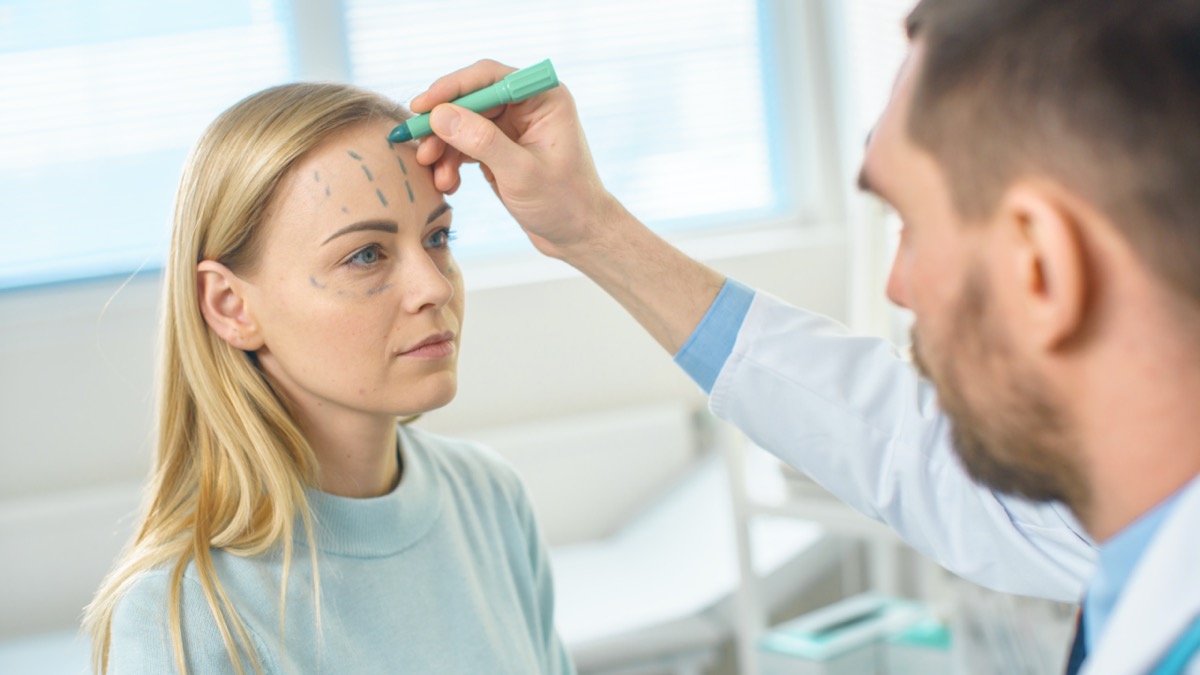“I have never done so many facelifts in a summer as I’ve done this year,” Diane Alexander, MD, a plastic surgeon in Atlanta, told The New York Times. Between mid-May through the end of July, she said she had performed a whopping 251 procedures. Why is there such an uptick in demand? You can thank Zoom. Doctors report that many of their clients want to get work done after seeing themselves in video meetings. (And yes, that’s even with Zoom’s “Touch Up My Appearance” filter, which smooths wrinkles and blemishes on your skin.) “Pretty much every facelift patient that comes in says: ‘I’ve been doing these Zoom calls and I don’t know what happened, but I look terrible,’” Alexander said. Sarmela Sunder, MD, a facial plastic surgeon in Beverly Hills, said lower facelift and neck lift appointments have doubled compared to February. “Everyone has been cooped up and staring at themselves on Zoom or in the mirror,” Sunder told InStyle. “I thought after the first month or so things would die down, but I’m booked out longer than I have ever been previously.“ae0fcc31ae342fd3a1346ebb1f342fcb In addition to overanalyzing their camera appearances, many people are finding that working from home allows them the personal time and space to heal from surgery while wearing masks covers the bruises or swelling. “They can actually recover at home and also they can have a mask that they wear when they go outside after a rhinoplasty or facelift,” Rod J. Rohrich, MD, a cosmetic surgeon based in Texas, told the BBC. “People want to resume their normal lives and part of that is looking as good as they feel.” Before the pandemic, Botox injections, fillers, and skin-tighteners were replacing the interest in facelifts. In fact, in the past two decades, the number of Botulinum Toxin Type A fillers (like Botox) rose by 878 percent while facelifts dropped by 8 percent, according to the American Society of Plastic Surgeons. RELATED: For more up-to-date information, sign up for our daily newsletter. But now, that trend is reversing. “They were going for fillers and Botox because they didn’t have any down time,” Colleen Nolan, executive director of the American Academy of Cosmetic Surgery, told The Times. “Now they realize they can have the procedure and privately experience it.” And the economy hasn’t stopped clinics from booking up, either. Despite the fact that a facelift costs $7,500 on average, people are simply reallocating money they would have spent on travel or entertainment for surgery instead. “Vanity doesn’t disappear just because the world is in a state of crisis,” Sanam Hafeez, PsyD, a neuropsychologist and faculty member at Columbia University, told InStyle. “On top of that, we’re seeing a lot more of ourselves—whether it be virtually or in the mirror at home—and becoming harsher critics.” And for more news you should know now, check out This Face Covering Is Actually Worse Than No Mask at All, Study Finds.
